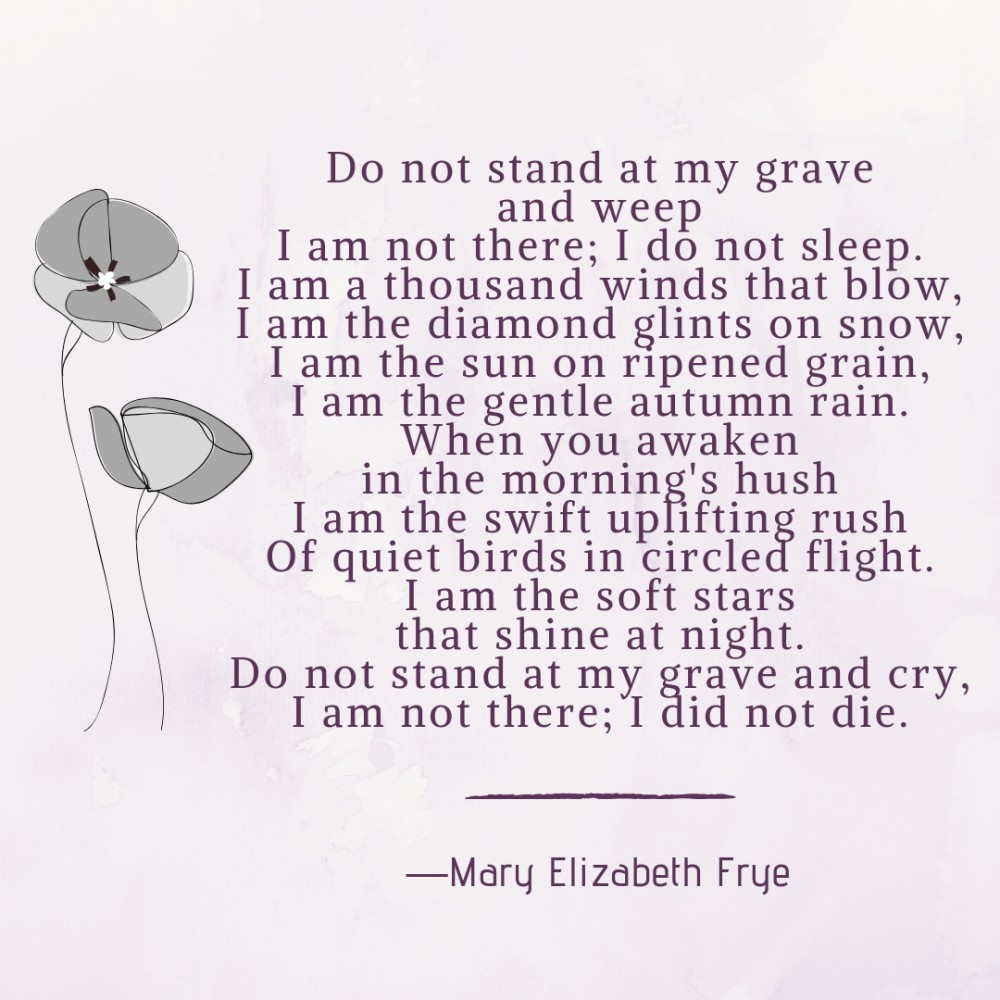

The speaker further continues to soothe the reader letting them know that they’ll be there every morning, the mourner greets a new day, alive in ‘ the swift uprush of quiet birds‘. The descriptive phrases here, especially ‘ diamond glint‘ and ‘ ripened grain‘ add a rich element of imagery and structure to the poem.

In the subsequent lines, the dead person is comforting the mourner, assuring them that rather than being dead, and in a grave, they are very much alive and present in every bit of nature.

Widely read at funerals, this poem is aimed at soothing those who are mourning the loss of a loved one, with the dead person assuring them that they are not confined to their graves. Often noted for the authoritative tone evident in the first few lines, this poem starts with the speaker dictating the reader to not weep at his/her grave for they are not there in the grave. From Goodreads, ‘The poem for which she became famous was originally composed on a brown paper shopping bag, and was reportedly inspired by the story of a young Jewish girl, Margaret Schwarzkopf, who had been staying with the Frye household and had been unable to visit her dying mother in Germany because of anti-Semitic unrest.’ All Rights Reserved.Written in 1932, this poem was written from the perspective of a person beyond the grave, someone who was well aware of what it felt like to die. In the clouds of space and countless stars of every hue The changes and additions I made to the original and traditional versions of the poem are shown below in lavender. This was the first high-quality recording of her fantastic voice, and I hope it moves you as deeply as it has the others who have heard it. Holly Phaneuf Erskine, is a college chemistry professor (see her great chemistry site at ), and co-producer of The Emissary movie, and started out as a music major on scholarship. I recorded the guitar, piano and string parts working alone for a few hours, then invited Holly over to sing the vocal. This, along with Holly's tremendous encouragement and feedback, allowed me to finally finish these lyrics and record the song in time for her aunt's memorial service. Upon reading the original words attributed to Mary Frye, I found the line I am in each lovely thing, which is omitted in the traditional version. Holly's mother sent her an email saying that this poem was her aunt's favorite, and does she know where she could find the complete poem for her memorial service? There it sat for years until Holly's aunt passed away in the Spring of 2003. The original poem, however, does not make a complete song lyric, in my opinion, so I worked a bit on the second stanza, got stuck, and put the song on the back burner. I stumbled across a greeting card many years ago with a popular version of this poem, took it home and immediately set it to music.


 0 kommentar(er)
0 kommentar(er)
